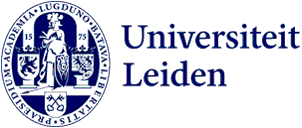
Aitor Burguet-Coca studied fire-use from Palaeolithic to Bronze Age: ‘This gives us an image on different uses of fire across prehistory’
For the following years, Dr Aitor Burguet-Coca will be a returning face at the Faculty of Archaeology. He will join Dr Amanda Henry’s team with his expertise on prehistoric fire use and the methodologies that studying ancient hearths requires.
The meaning of fire
Originally from Spain, Aitor studied bachelor’s degree in History in Barcelona. After that ‘I did a Master’s Degree in Quaternary Archaeology and Human Evolution and a PhD at IPHES, the Catalan Institute of Human Paleoecology and Social Evolution in Tarragona.’ His PhD was all about the use of fire in prehistory. ‘I analyzed a wide array of archaeological fire traces from sites that date from the Middle Palaeolithic to the Bronze Age. For the Palaeolithic sites, I attempted to figure out what the use of fire meant to these human groups of hunter-gatherers. Aspects related to technology, culture and behave
our such as fuel collection, the dynamics of the occupation, and pyrotechnology or the preservation of fire in the archaeological record were addressed.’
His research time frame was remarkably broad. ‘I also included two sites from Neolithic to Bronze Age, where I investigated very specific sequences in recent prehistory in caves and rock shelters.’ During the recent prehistory, these locations were used to hold and enclose herds of animals. ‘This is something typical for the Mediterranean region. The shepherds, after they used the cave for their animals, used fire to clean and sterilize the space. They lit heaps of dung on fire together with other vegetable residues generated during the cave occupation.’ Aitor investigated the traces that remained, the layer of ashes, dung, and micro-remains.

Understanding the fire
This massive time frame gives Aitor a big vision of the use of fire. ‘It gives us an image of the different uses of fire in prehistory. And what is interesting is that I used the same investigative methodology in all these cases. Combining experimental archaeology, phytoliths analysis, and mineral composition through FTIR. You have to combine these techniques to understand the fire.’
Archaeology in Leiden is neither a stranger to experimental archaeology nor the study of ancient fire. Aitor is embedded in the research group of Amanda Henry. ‘During my PhD, I had a short stay at the Max Planck Institute in Leipzig, where I met Amanda. I felt it was important to go abroad to work in other institutions as to experience other places, so I reached out to her.’
The Leiden focus on the research of ancient fire also worked magnetically. ‘There are a lot of people working here related to fire and a consolidated research trajectory. Many of the papers that hold the main debates and knowledge on the use of fire in prehistory have been published by members of the Faculty of Archaeology.’
Natural vs. wild
In the first instance, Aitor will be in Leiden for a year with a two-year Spanish fellowship. ‘The goal of this fellowship is to go abroad for a year, build a network and acquire new knowledge. For the second year, I will return to Spain to apply the new skills to the analysis of the archaeological record.’ However, Aitor will be back after that. ‘I also got a Marie Skłodowska-Curie Actions, applied for together with Amanda Henry. In 2023 I will be back in Leiden with this funding.’
For the Marie Curie grant, Aitor will focus on the period in which habitual use of fire was spreading in Europe, the Middle Pleistocene, some 400-300,000 years ago. ‘My project is focused on developing new techniques to uncover fire traces in Pleistocene sites. Fire traces in this period are scarce and hard to identify. With new approaches and methods applied in archaeological fire analysis, we will try to identify and characterize hearths in ancient archaeological sequences.’ This will hopefully lead to a technique that can make a differentiation between natural fires, and human-made ones.
